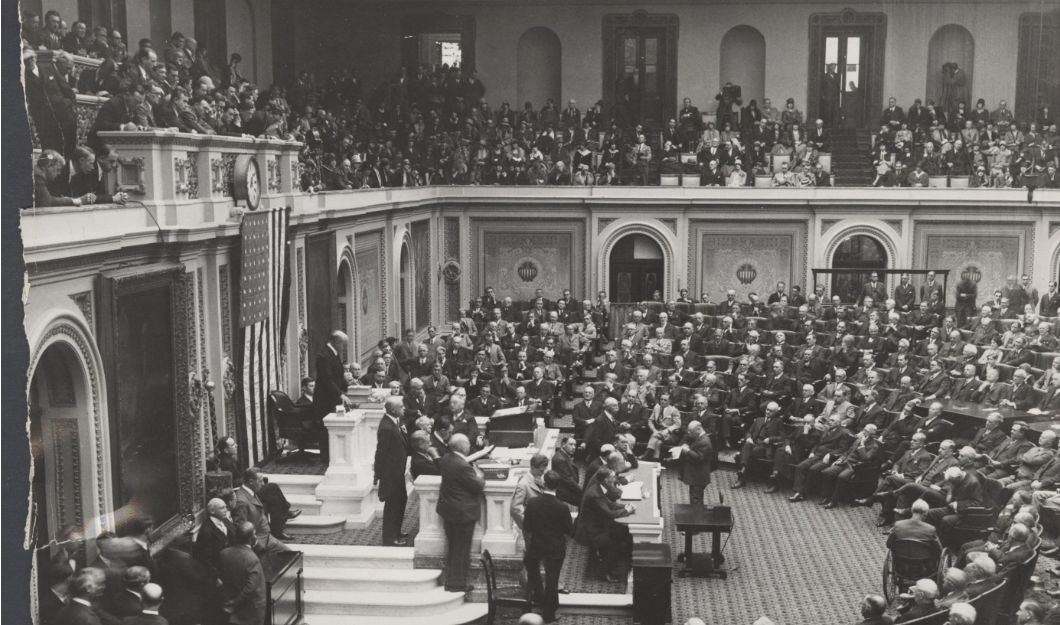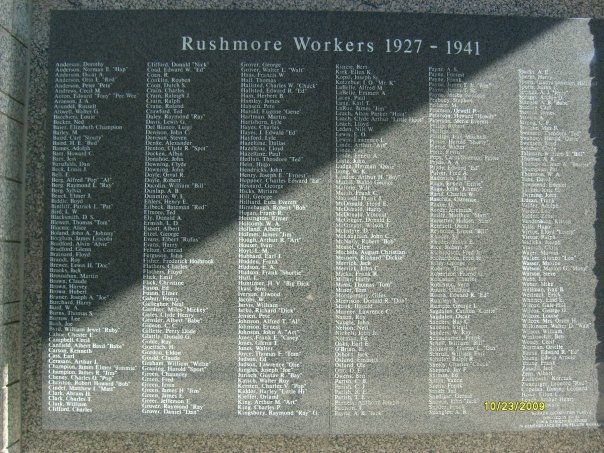|
Seventieth United States Congress
The 70th United States Congress was a meeting of the legislative branch of the United States federal government, consisting of the United States Senate and the United States House of Representatives. It met in Washington, D.C. from March 4, 1927, to March 4, 1929, during the last two years of Calvin Coolidge's presidency. The apportionment of seats in the House of Representatives was based on the thirteenth decennial census of the United States in 1910. Both chambers had a Republican majority - albeit reduced from the previous Congress - and along with President Coolidge, the Republicans maintained an overall federal government trifecta. Major events * November 6, 1928: U.S. Senate elections and U.S. House elections * This was the last Congress to be exclusively white and the last to not have a single black member of Congress in either chamber. Major legislation * March 10, 1928: Settlement of War Claims Act * May 15, 1928: Flood Control Act of 1928 (Jones–Reid Act) * ... [...More Info...] [...Related Items...] OR: [Wikipedia] [Google] [Baidu] |
United States Capitol
The United States Capitol, often called The Capitol or the Capitol Building, is the seat of the legislative branch of the United States federal government, which is formally known as the United States Congress. It is located on Capitol Hill at the eastern end of the National Mall in Washington, D.C. Though no longer at the geographic center of the federal district, the Capitol forms the origin point for the street-numbering system of the district as well as its four quadrants. Central sections of the present building were completed in 1800. These were partly destroyed in the 1814 Burning of Washington, then were fully restored within five years. The building was later enlarged by extending the wings for the chambers for the bicameral legislature, the House of Representatives in the south wing and the Senate in the north wing. The massive dome was completed around 1866 just after the American Civil War. Like the principal buildings of the executive and judicial branches ... [...More Info...] [...Related Items...] OR: [Wikipedia] [Google] [Baidu] |
Merchant Marine Act Of 1928
The Merchant Marine Act of 1928 (also called the "Jones-White Act") is a United States law to stimulate private shipbuilding in the United States and to assist the merchant marine financially in being competitive in the emerging global market. It is printed in the United States Code in Title 46A (Shipping Appendix) Chapter 24A. It was sponsored by Sen. Wesley L. Jones Wesley Livsey Jones (October 9, 1863November 19, 1932) was an American politician who served in the United States House of Representatives and the United States Senate representing the state of Washington. Born near Bethany, Illinois days aft ... (R) of Washington and Sen. Wallace H. White (R) of Maine. It did not repeal the La Follette Seamen's Act of 1915, but instead created Federal export subsidies to big shipping firms. The subsidies were purported to offset the cost of having to pay seamen higher wages under the earlier act; however, the subsidies were larger than wage differences. References Unite ... [...More Info...] [...Related Items...] OR: [Wikipedia] [Google] [Baidu] |
Increased Penalties Act
The Increased Penalties Act was a bill that increased the penalties for violating prohibition. Enacted on March 2, 1929, it is also called the "Jones–Stalker Act" or the "Jones Act". The legislation was sponsored by two Republicans, Sen. Wesley L. Jones of Washington and Rep. Gale H. Stalker of upstate New York State. It stipulated that wherever any penalty was prescribed for the illegal manufacture, sale, transportation, importation, or exportation of intoxicating liquor as defined in the Volstead Act of 1919, the penalty imposed for each such offense should be a fine not to exceed $10,000 or imprisonment not to exceed five years, or both. The Act did not repeal any minimum penalties then prescribed by law. It further declared that it was the intent of Congress that the courts, in sentencing offenders, "should discriminate between casual or slight violations and habitual sales of intoxicating liquor, or attempts to commercialize violations of the law." Its purpose, as explaine ... [...More Info...] [...Related Items...] OR: [Wikipedia] [Google] [Baidu] |
Norbeck-Williamson Act Of 1929
Norbeck-Williamson Act of 1929 or Mount Rushmore National Memorial Act of 1929 established the Mount Rushmore National Memorial Commission defining the powers and purpose of the twelve member committee. The Act of Congress authorized the Mount Harney Memorial Association of South Dakota to stone carving, stone carve models of George Washington, Thomas Jefferson, Abraham Lincoln, and Theodore Roosevelt in the Harney National Forest encompassed by the Black Hills National Forest. The granite sculpture was to be created in accordance with the rock relief designs by Gutzon Borglum. In 1928, the 70th Congressional session members Peter Norbeck and William Williamson (American politician), William Williamson formulated the code of law for the Mount Rushmore National Memorial Act. The Senate Bill (law), bill was passed by the United States Congressional session and enacted into law by the Presidency of Calvin Coolidge, 30th President of the United States Calvin Coolidge on February 29, 192 ... [...More Info...] [...Related Items...] OR: [Wikipedia] [Google] [Baidu] |
Mount Rushmore
Mount Rushmore National Memorial is a national memorial centered on a colossal sculpture carved into the granite face of Mount Rushmore (Lakota: ''Tȟuŋkášila Šákpe'', or Six Grandfathers) in the Black Hills near Keystone, South Dakota, United States. Sculptor Gutzon Borglum created the sculpture's design and oversaw the project's execution from 1927 to 1941 with the help of his son, Lincoln Borglum. The sculpture features the heads of four United States Presidents recommended by Borglum: George Washington (1732–1799), Thomas Jefferson (1743–1826), Theodore Roosevelt (1858–1919) and Abraham Lincoln (1809–1865). The four presidents were chosen to represent the nation's birth, growth, development and preservation, respectively. The memorial park covers and the mountain itself has an elevation of above sea level. ... [...More Info...] [...Related Items...] OR: [Wikipedia] [Google] [Baidu] |
Migratory Bird Conservation Act
The Migratory Bird Conservation Act of 1929 ({{usstat, 45, 1222) of February 18, 1929, (also known as the "Norbeck-Andresen Act") created the United States Migratory Bird Conservation Commission (MBCC) to consider and approve any areas of land and/or water recommended by the Secretary of the Interior for purchase or rental by the U.S. Fish and Wildlife Service and to fix the price or prices at which such areas may be purchased or rented. The Commission considered the establishment of new waterfowl refuges. While perhaps unimportant because of the Great Depression, the act was an important step for the conservation movement. See also *Migratory Bird Treaty Act The Migratory Bird Treaty Act of 1918 (MBTA), codified at (although §709 is omitted), is a United States federal law, first enacted in 1918 to implement the convention for the protection of migratory birds between the United States and Canada . ... United States federal environmental legislation 1929 in the environment ... [...More Info...] [...Related Items...] OR: [Wikipedia] [Google] [Baidu] |
Color Of Title Act
Color (American English) or colour (British English) is the visual perceptual property deriving from the spectrum of light interacting with the photoreceptor cells of the eyes. Color categories and physical specifications of color are associated with objects or materials based on their physical properties such as light absorption, reflection, or emission spectra. By defining a color space, colors can be identified numerically by their coordinates. Because perception of color stems from the varying spectral sensitivity of different types of cone cells in the retina to different parts of the spectrum, colors may be defined and quantified by the degree to which they stimulate these cells. These physical or physiological quantifications of color, however, do not fully explain the psychophysical perception of color appearance. Color science includes the perception of color by the eye and brain, the origin of color in materials, color theory in art, and the physics of electromag ... [...More Info...] [...Related Items...] OR: [Wikipedia] [Google] [Baidu] |
Hoover Dam
Hoover Dam is a concrete arch-gravity dam in the Black Canyon of the Colorado River, on the border between the U.S. states of Nevada and Arizona. It was constructed between 1931 and 1936 during the Great Depression and was dedicated on September 30, 1935, by President Franklin D. Roosevelt. Its construction was the result of a massive effort involving thousands of workers, and cost over one hundred lives. It was referred to as Hoover Dam after President Herbert Hoover in bills passed by Congress during its construction; it was named Boulder Dam by the Roosevelt administration. The Hoover Dam name was restored by Congress in 1947. Since about 1900, the Black Canyon and nearby Boulder Canyon had been investigated for their potential to support a dam that would control floods, provide irrigation water and produce hydroelectric power. In 1928, Congress authorized the project. The winning bid to build the dam was submitted by a consortium named Six Companies, Inc., which began ... [...More Info...] [...Related Items...] OR: [Wikipedia] [Google] [Baidu] |
Boulder Canyon Project Act
In geology, a boulder (or rarely bowlder) is a rock fragment with size greater than in diameter. Smaller pieces are called cobbles and pebbles. While a boulder may be small enough to move or roll manually, others are extremely massive. In common usage, a boulder is too large for a person to move. Smaller boulders are usually just called rocks or stones. The word ''boulder'' derives from ''boulder stone'', from the Middle English ''bulderston'' or Swedish ''bullersten''. Online Etymology Dictionary. Retrieved December 9, 2011, from Dictionary.com website. In places covered by s during s, ... [...More Info...] [...Related Items...] OR: [Wikipedia] [Google] [Baidu] |
Reed–Jenkins Act
The Reed–Jenkins Act was a statute enacted on May 29, 1928, during the 70th United States Congress. It repealed previous laws that provided federal funds for Americanization programs supporting Native American schools, educational experimentation agencies, and Native agency farms. The law was sponsored by Senator David A. Reed (Republican) of Pennsylvania and Representative Thomas A. Jenkins (Republican) of Ohio. See also :Emergency Quota Act :Immigration Act of 1924 :Passport Act of 1926 Passport Act of 1926, 22 U.S.C § 211, is a United States statue authorizing the issuance of United States passports and visas for a validity of two years from the issue date. The Act of Congress provided the United States Department of State au ... References External links * 1928 in law 70th United States Congress United States federal education legislation {{US-statute-stub ... [...More Info...] [...Related Items...] OR: [Wikipedia] [Google] [Baidu] |
Revenue Act Of 1928
The Revenue Act of 1928 (May 29, 1928, ch. 852, 45 Stat. 791), formerly codified in part at 26 U.S.C. sec. 22(a), is a statute enacted by the 70th United States Congress in 1928 regarding tax policy. Section 605 of the Act provides that "In case a regulation or Treasury decision relating to the internal revenue laws is amended by a subsequent regulation or Treasury decision, made by the Secretary or by the Commissioner with the approval of the Secretary, such subsequent regulation or Treasury decision may, with the approval of the Secretary, be applied without retroactive effect." (as cited in Helvering v. R.J. Reynolds Tobacco Co., ) Tax on Corporations A rate of 12 percent was levied on the net income of corporations. Tax on Individuals A normal tax and a surtax A surtax is a tax levied upon another tax, also known as tax surcharge. Canada The provincial portion of the value-added tax on goods and services in two Canadian jurisdictions, Québec and Prince Edward Island ... [...More Info...] [...Related Items...] OR: [Wikipedia] [Google] [Baidu] |




